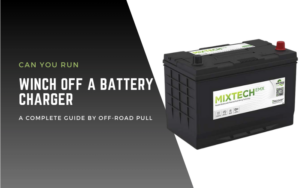If you’re into off-roading, vehicle recovery, or any activity that requires the use of a winch, you’ve probably wondered about the best way to power it. One common question is whether you can run a winch off a battery charger.
Let’s dive into this topic and explore the ins and outs of winch power requirements, the feasibility of using a battery charger, and the best practice for ensuring your winch operates safely and effectively.
Quick Summary
Running a winch off a battery charger is technically possible but not recommended due to insufficient power output, potential damage to the charger, and safety concerns. Proper power sources like vehicle batteries, deep cycle batteries, or portable power stations are better alternatives.
Understanding Winch Power Requirements
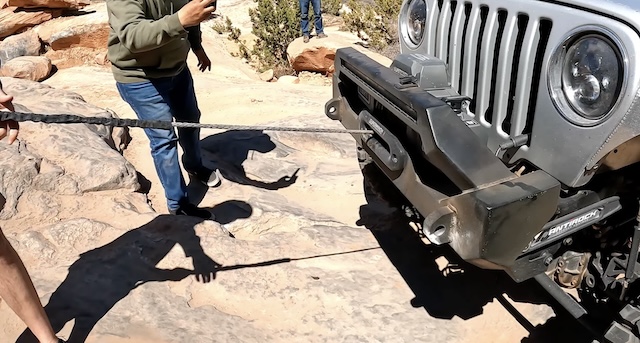
Winches are powerful devices designed to pull heavy loads, so they demand a significant amount of power to operate.
Typically, winches require a voltage of 12V or 24V, and their amperage needs can vary widely depending on the model and the load being pulled.
For instance, a standard 12V winch might draw anywhere from 300 to over 500 amps under load.
When we compare this to standard battery chargers, we see a stark difference.
Most battery chargers deliver a relatively low current, usually between 2 to 10 amps for regular chargers, and up to 30 amps for more powerful models. This is a fraction of what a winch needs to function properly under load.
Also check: Best winch Battery
Can You Run a Winch Off a Battery Charger?
The short answer is yes, it’s possible to run a winch off a battery charger, but it’s not recommended.
While a battery charger can provide some power to the winch, it’s typically not enough to meet the high demands of the winch during operation.
This can lead to several issues, which we’ll discuss next.
Risks and Challenges of Using a Battery Charger for a Winch
Insufficient Power Output:
Battery chargers are not designed to supply the high current required by winches. Most winches need a significant amount of power to pull heavy loads effectively.
For example, a standard 12V winch might draw anywhere from 300 to over 500 amps when it is under load.
On the other hand, most battery chargers provide a much lower current, usually between 2 to 10 amps for regular chargers and up to 30 amps for more powerful models. This means that the charger simply cannot deliver the amount of power that the winch needs.
As a result, the winch might operate very slowly or not at all when you try to use a battery charger as the power source.
Potential Damage to the Battery Charger:
Using a battery charger to power a winch can push the charger beyond its intended limits. Chargers are designed to provide a steady, low current to recharge batteries over time, not to handle the sudden, high current draw that a winch requires.
When a charger is forced to deliver more power than it is designed for, it can overheat and fail. This not only damages the charger itself but can also create a safety hazard, such as the risk of fire or electric shock.
Safety Concerns:
Safety is a major concern when using an underpowered source like a battery charger for a winch. The components of the winch and the charger can overheat if they are not receiving the proper amount of power.
Overheating can cause electrical components to melt or catch fire, posing serious risks to both people and property.
Moreover, the risk of electrical shock increases when equipment is used in ways that exceed its rated capacity. To avoid these dangers, it’s crucial to use all equipment within its designed specifications.
Reduced Winch Performance:
A winch running on inadequate power from a battery charger will not perform efficiently. This means that the winch might pull more slowly or struggle to move the load at all.
Such poor performance can lead to increased wear and tear on the winch motor, potentially shortening its lifespan. Additionally, the object being pulled might be subjected to jerky movements or stops and starts, which could cause damage or create hazardous situations.
For these reasons, it is important to ensure that your winch has a sufficient and stable power source to operate effectively and safely.
Proper Power Sources for Winches
To ensure your winch operates safely and effectively, it’s crucial to use appropriate power sources. Here are the best options:
Vehicle Batteries:
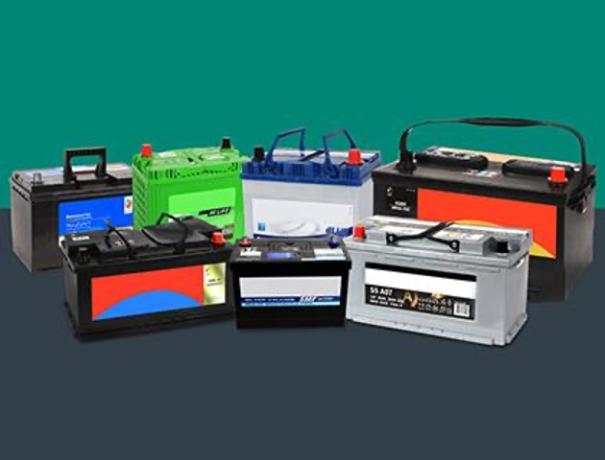
Vehicle batteries are the most common power source for winches. These 12V batteries are designed to provide a high amount of current, which is essential for winch operation. They are readily available since most vehicles are already equipped with them.
When using a vehicle battery, it’s important to ensure that the battery is in good condition and fully charged. This helps to maintain the winch’s performance and reliability.
Additionally, the vehicle’s alternator can help keep the battery charged during winching operations, providing a continuous power supply.
Deep Cycle Batteries:
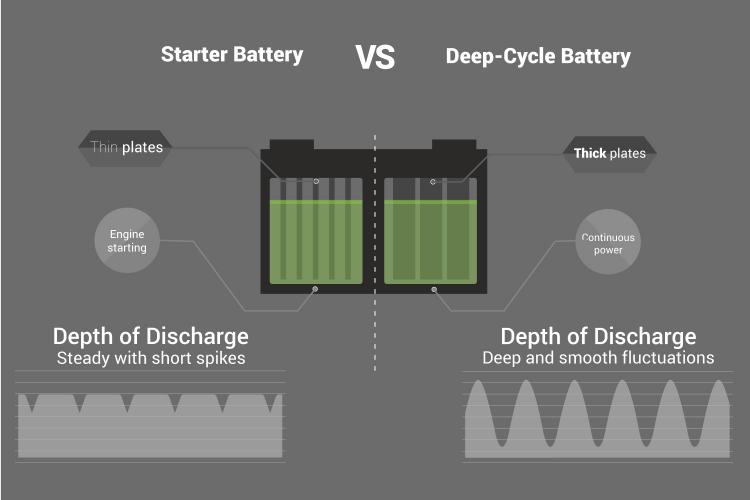
Deep cycle batteries are another excellent option for powering winches. Unlike regular car batteries, which are designed for short bursts of high current to start engines, deep cycle batteries are built to provide a steady amount of power over an extended period.
This makes them ideal for winching, which can require sustained power to pull heavy loads. Deep cycle batteries can handle repeated deep discharges without losing capacity, making them more durable and reliable for heavy-duty use.
They are commonly used in marine applications, RVs, and off-grid solar systems, so they are readily available and come in various capacities to suit different needs.
Portable Power Stations:
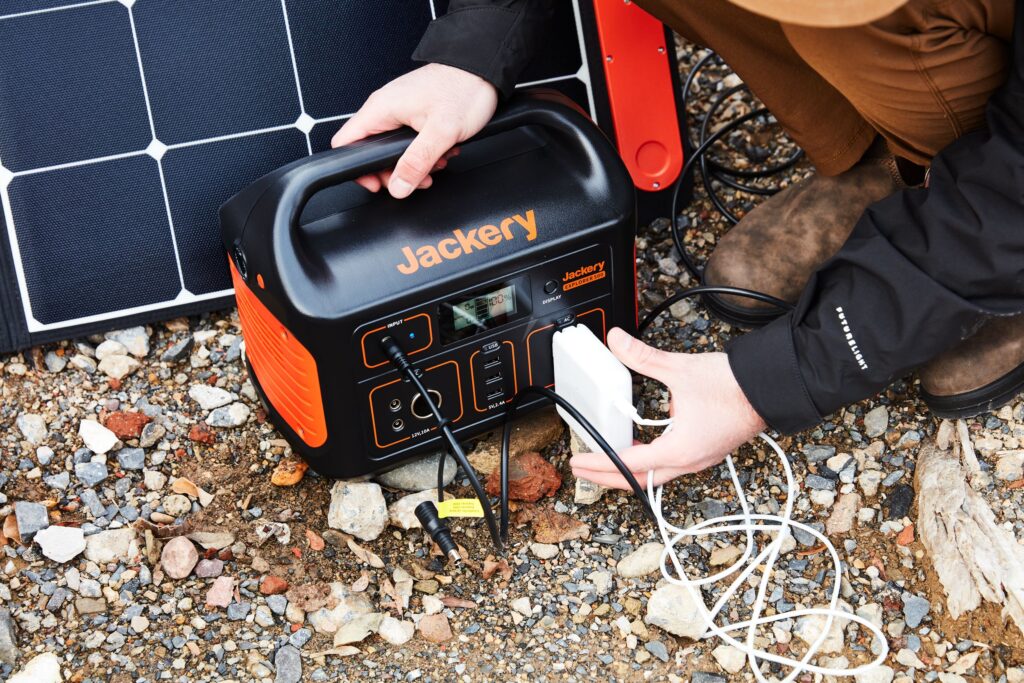
Portable power stations are a versatile and convenient power source for winches, especially in remote locations where vehicle or deep cycle batteries are not available.
These devices are essentially large battery packs that can store significant amounts of energy.
They are designed to provide high power output, which is necessary for operating a winch. Portable power stations can be recharged using solar panels, making them an eco-friendly and sustainable option.
They are also equipped with various output ports, allowing them to power multiple devices simultaneously.
This flexibility makes them a valuable addition to any off-road or recovery setup. When choosing a portable power station, ensure it has the capacity and output capabilities to meet the demands of your winch.
Alternatives to Using a Battery Charger
If you’re looking for other ways to power your winch without relying on a standard battery charger, consider these options:
Jump Starters with Winch-Compatible Outputs
Modern jump starters are equipped with high current output options. These devices are compact and portable, making them a practical solution for powering a winch in emergency situations.
They can deliver the high current required by a winch, ensuring that it operates efficiently and effectively when you need it most.
Dedicated Winch Power Supplies
These power supplies are specifically designed for winch operation. They provide a stable and sufficient power output tailored to meet the high demands of a winch.
Using a dedicated power supply ensures that the winch receives consistent and adequate power, which helps in maintaining optimal performance and safety during heavy-duty tasks.
Solar-Powered Options for Remote Locations
In remote areas where access to traditional power sources is limited, solar-powered solutions can be highly beneficial. Solar panels can be used to charge deep cycle batteries, which in turn can power your winch.
This sustainable option not only provides the necessary power but also reduces dependence on traditional energy sources, making it an eco-friendly choice for powering winches in off-grid locations.
Best Practices for Winch Power Management
To get the most out of your winch and ensure it operates safely, follow these best practices:
Regular Battery Maintenance: Keep your batteries in good condition by checking them regularly, cleaning terminals, and ensuring they are fully charged.
Using the Right Cable Gauge: Ensure the cables connecting your winch to the power source are of the appropriate gauge to handle the high current draw.
Installing a Dual Battery System: For frequent winch use, consider installing a dual battery system in your vehicle. This ensures you have a dedicated battery for winching, reducing the strain on your primary vehicle battery.
When Might Using a Battery Charger Be Acceptable?
While using a battery charger for winch operation is generally not advisable, there are a few scenarios where it might be acceptable:
Emergency Situations: If no other power source is available, a battery charger can be used as a temporary solution. However, this should be done with caution to prevent any potential damage or safety hazards.
Testing Winch Functionality: If you’re simply testing the winch without applying a heavy load, a battery charger might suffice. This allows you to check if the winch is functioning correctly without requiring its full power capacity.
Precautions to Take If You Must Use a Charger: Always monitor the charger and winch closely for any signs of overheating or malfunction. Limit the use of the charger to short periods and avoid applying heavy loads to the winch to reduce the risk of damage and ensure safe operation.
Conclusion
Running a winch off a battery charger is technically possible but fraught with risks and challenges.
For safe and efficient winch operation, it’s best to use proper power sources such as vehicle batteries, deep cycle batteries, or portable power stations.
By following best practices and understanding the power requirements of your winch, you can ensure reliable performance and avoid potential hazards.

